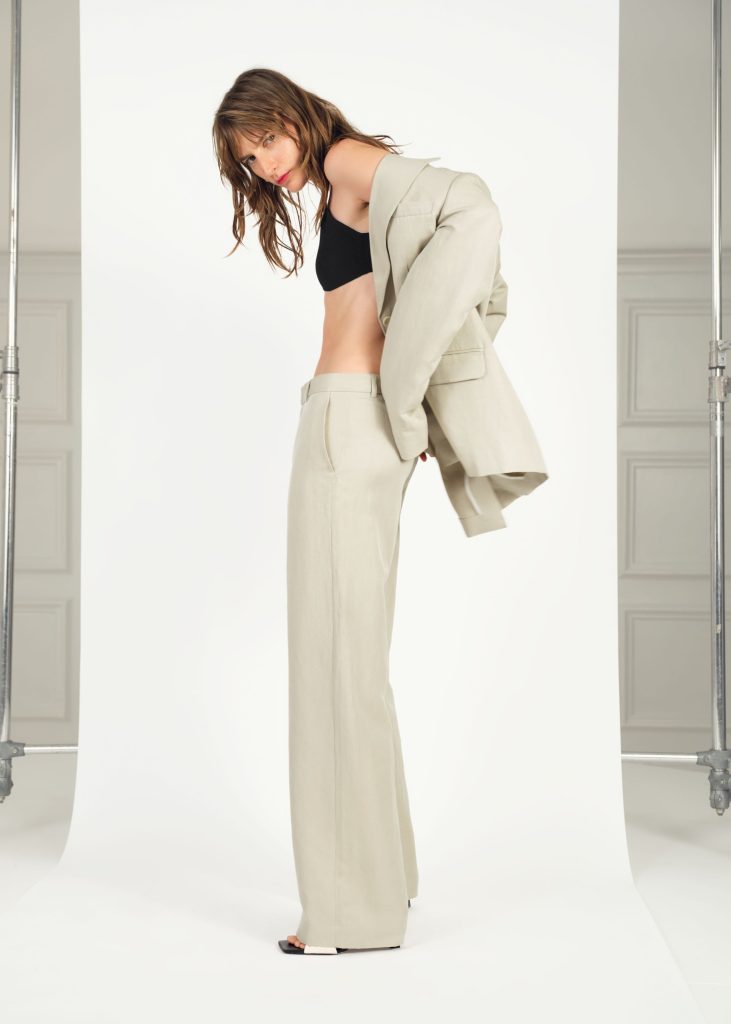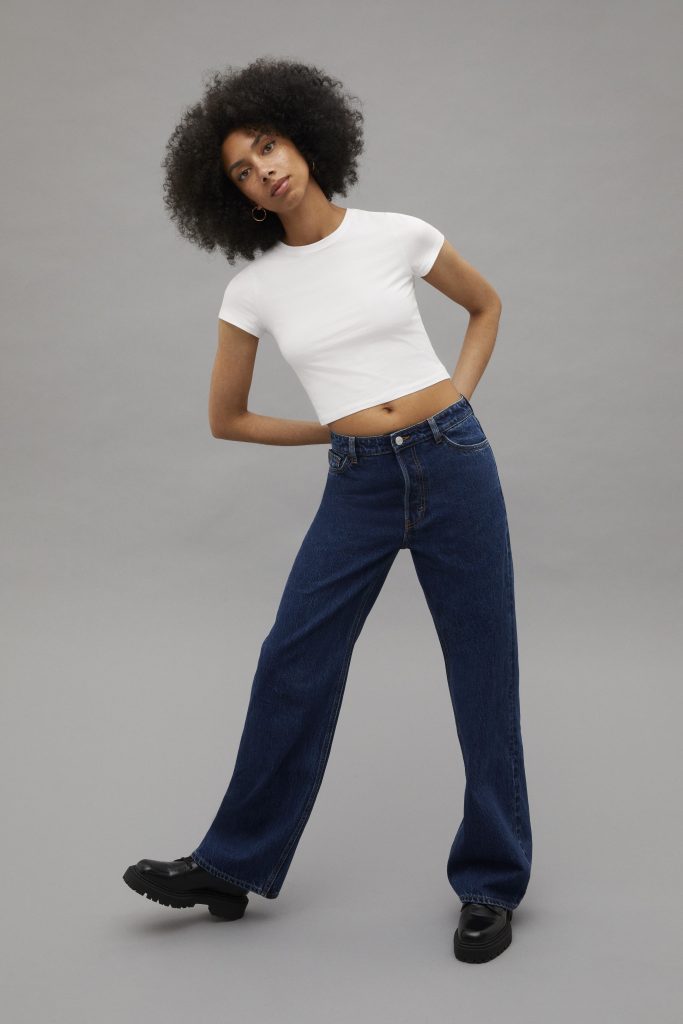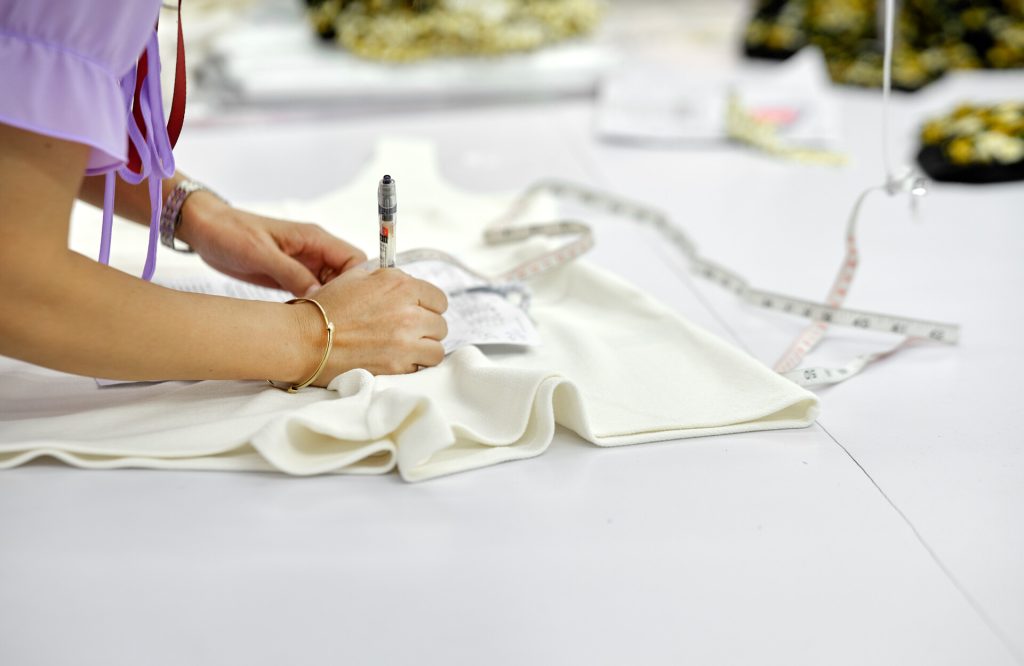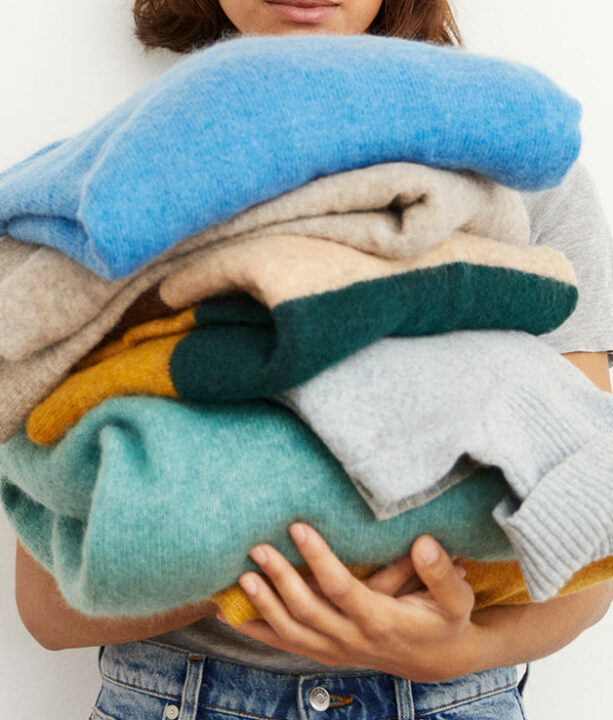Behind the seams: turning fashion circular
What do you think a dress designed to be more circular looks like? Can you tell the difference between a regular pair of jeans and a pair that is made to be repurposed and reused? What about a coat made on-demand?
At H&M Group we’re committed to becoming a circular business. As part of this transformation, we’re changing the way we design products. For many years we focused on using more sustainable materials, but now we’re moving towards designing fashion that can be used for longer, reused, repaired and repurposed before eventually being recycled.
Let’s take a closer look at four garments designed using our Circulator guide to uncover what products can look like in a circular fashion industry. We recognise that none of these garments are 100% circular, but they illustrate the different ways our brands are engaging with this new way of designing and taking steps towards circularity.
H&M: Metaverse Collection dress
- Any points of the garment that experience lots of wear and tear are strengthened to make them more durable and less likely to break.
- The dress features a smock technique which makes it is possible to fit more body types.
- To make the dress easier to recycle at the end of its life it is made of mono-materials, i.e. all materials used are from the same family of fibres, in this case polyester.
- The dress follows a zero-waste design that uses the full width of the fabric and eliminates cutting waste.
- Digital 3D prototyping was used in the design process instead of physical samples to reduce waste.
- Several pieces from the Metaverse collection are available to rent it in selected markets so the garments can be used again and again.
& Other Stories: Summer Capsule Collection trousers
- Used classic materials, proportions and colours so the trousers don’t go out of fashion and are used for longer.
- Used standard buttons and trims to make repair and replacement easier, extending the life of the garment.
- The waistband is split and there is extra seam allowance on the back crotch to make it easier to adjust and alter to fit lots of different body types.
- Recycled silk content of the trousers comes cutting waste produced during the manufacturing process.
- Additional product care via is available to customers via a QR code on the hang tag, helping give the garment a longer life.
- Digital 3D prototyping was used in the design process instead of physical samples to reduce waste.
H&M: On-demand puffer jacket
- The puffer jackets were made on demand, so we only produced what we sold.
- Customers got to co-create the jacket to encourage them to use it more and keep it longer. They could choose the colour of the outer jacket, lining, zip and other trims from a wide palette of classic and on-trend colours. Plus, there was a choice of two lengths to fit different body types and preferences.
- The classic puffer jacket is a known to be a popular style with H&M customers and will not go out of fashion quickly, encouraging longer use.
- To make the jacket easier to recycle at the end of its life all textile layers are made of mono-materials, i.e. the shell, padding and lining are made from the same family of fibres, in this case polyester.
Monki: Jeans Redesign Collection
- To make recycling easier, focused on a mono-material approach and used as much cellulosic content as possible. For example:
- Pocket bags were made of organic cotton instead of a cotton-polyester mix.
- The jeans sewn together with Eco Verde thread made from recycled polyester and BCI cotton.
- Replaced metal rivets with bartacks and laser printed logo on back waistband instead of using a jacron patch.
- Main material made of 20% post-consumer waste cotton and 80% in-conversion cotton*.
- QR code printed on a label for traceability and to aid sorters and recyclers at end of life .
- Natural indigo dye kept chemical content to a minimum, reduced energy and water use, whilst maintaining colour clarity.
Read more about our approach to circular design, watch videos and download a free guide.
*In-conversion cotton is produced by farmers making the transition to organic farming. With the demand for organic cotton outstripping supply, in-conversion cotton is a good alternative. It also supports farmers while they are in the process of switching to organic production. Read more here.






